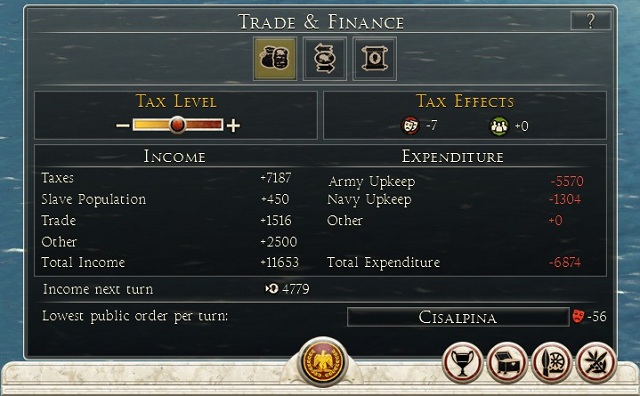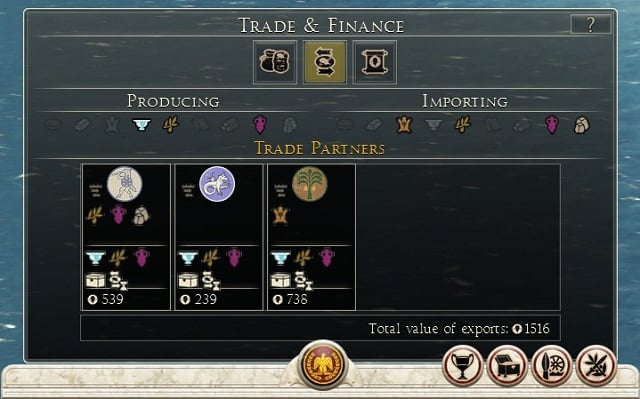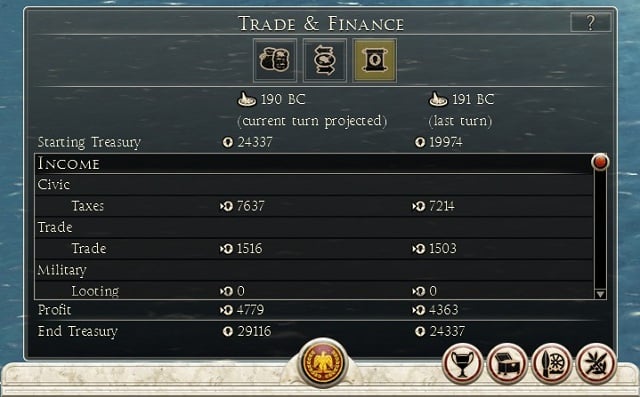Trade and finance | Strategic map
This window is available under 7 key. In the first tab, taxes, you can set the tax level for the entire empire. Higher tax levels quickly fill your treasury, but also increase discontent among people. Extreme tax levels can also stop influx of people and thus expansion of your provinces.
Empire income comes from different sources. The most important one are taxes applied to the entire population and right behind them you have trade. Income from slavery is closely dependent on the amount of slaves you enslaved during your conquers (this is a simple multiplier of the base income in the provinces). In addition you can receive an annual tribute from conquered nations and rewards for completing mission ordered by the Senate.
Regular expenses include wages, maintenance of the fleet and potential tribute which you have to pay to your more powerful neighbor.

The next tab shows trade details. If you have a trade agreement with another country, you'll see here list of imported and exported resources along with their prices. Imports of construction resources is of great importance in the later stages of the game, when largest available structures will require not easily accessible resources like marble for example.

The last tab summarizes finances of the last two turns. The information available here is much more detailed as in taxes tab. You can easily see here the places where you lose money and counter these trends.

The only interactive part of this window is the ability to set tax level. This bar should be used only to reduce any rebellious moods in the entire empire by temporary decreasing taxes or to speed up the development of various regions. If you conduct extensive conquests, much more convenient way is to set taxes in newly conquered province to 0, than change tax level for the entire empire.
You are not permitted to copy any image, text or info from this page. This site is not associated with and/or endorsed by the SEGA or Creative Assembly. All logos and images are copyrighted by their respective owners.
Copyright © 2000 - 2025 Webedia Polska SA for gamepressure.com, unofficial game guides, walkthroughs, secrets, game tips, maps & strategies for top games.
